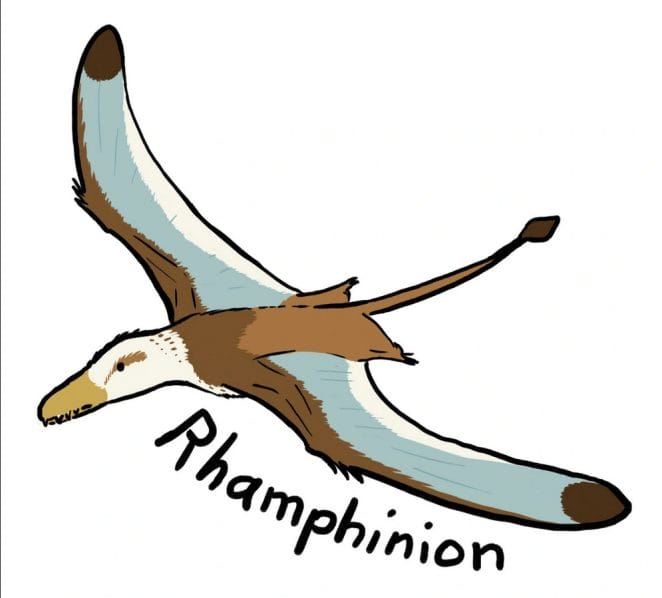Rhamphinion was a pterosaur from the Early Jurassic period. Only tooth pieces, the posterior portion of the skull, and a wing metacarpal from this flying lizard have been discovered in Arizona’s Kayenta Formation. A accurate classification is difficult due to the scarcity of fossil material.
The skull of Rhamphinion is known from four bone fragments: one from the occipital area, one from the left cheek, one from the jaws, and one that cannot be identified. The cheek bones reveal the bottom margins of the huge antorbital fenestra and orbit. The jaw part contains two teeth. It consists of recurved cones with longitudinal ridges.
Find out more facts about Rhamphinion
1: Rhamphinion quick facts:
Name: Rhamphinion (Greek for “Liaoning Wing”); pronounced Ram-fin-e-on
When it lived: Early Jurassic, 196.5 – 183 million years ago
Type of dinosaur: Pterosaur
Location: USA
Habitat: Marine ecosystem.
Wingspan/Weight: Unknown
Diet: Piscivore
Distinguishing Characteristics: Long-tailed, primitive pterosaur.
Named by: Padian (1984)
2: How do you pronounce ‘Rhamphinion’?
The name Rhamphinion should be pronounced “Ram-fin-e-on.”
3: What does the name Rhamphinion mean?
The epithet “Rhamphinion” means “beak nape,” while “jenkinsi” alludes to Farish Alston Jenkins Jr., who is credited with discovering the species.
4: What Did Rhamphinion Look Like?

In 1984, the first Rhamphinion fossil was discovered. The Rhamphinion is considered an early, long-tailed pterosaur. Only a portion of the skull was available for study, making it impossible to draw certain judgments regarding the species’ appearance. It is unknown whether Rhamphinion has feathers like other pterosaurs or teeth with serrated edges to aid in hunting.
Sources:Wikipedia





GIPHY App Key not set. Please check settings